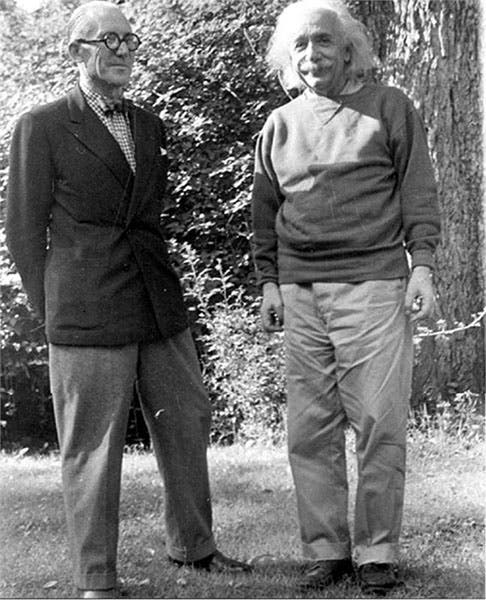Scientist of the Day - Nathan Rosen
Nathan Rosen, an American/Israeli physicist, was born Mar. 22, 1909, in Brooklyn. Rosen went to MIT for his undergraduate studies and remained there for his masters and PhD in physics. He was interested in general relativity and quantum theory, both relatively new fields, and before he even had his PhD in hand, he published a paper proposing the existence of a particle consisting of an electron and proton joined together, or a neutron. This was before James Chadwick actually discovered the neutron in 1932. Although Chadwick's neutron is not a proton fused with an electron, but a third and distinct particle, nevertheless, Rosen’s 1931 paper was an impressive one for a graduate student. About the same time, he wrote a paper on the hydrogen molecule, in which he pointed out that the two individual electrons cannot be described separately by wave equations, but must be described together, because their behavior is "entangled". This was the beginnings of a concept, entanglement, that would become more and more central to quantum mechanics.
Rosen moved on to Princeton for post-graduate study, where he encountered Albert Einstein at the Institute for Advance Study; they must have hit it off, for Rosen became Einstein's "clerk" for two years. Together, they wrote and published a paper that is responsible for whatever fame Rosen has in the world outside quantum mechanics. The paper was titled "The particle problem in the general theory of relativity" and appeared in Physical Review in 1935. In the paper, Einstein and Rosen discussed the possibility that space-time might be folded into parallel sheets, with a particle acting as a "bridge" between the sheets. The proposed connection would later be called an Einstein-Rosen bridge, and even later, a wormhole.
Science fiction since the 1960s would not have been able to function without wormholes to get parties from one part of the universe to another in no time at all. To give an example that might be familiar, in the Marvel film Thor, the god of thunder (Chris Hemsworth) has been exiled to Earth via the Bifröst bridge and has encountered a young scientist, Jane Foster (Natalie Portman), who photographed his unexpected arrival. Foster and physicist Erik Selvig (Stellan Skarsgård) are examining the photographs, and Jane remarks that the lensing around the edges of the photo “is characteristic of an Einstein-Rosen bridge.” Selvig explains to their assistant that an Einstein-Rosen bridge is a theoretical connection between two different points in space-time, and Jane adds: “it's a wormhole.” An Einstein-Rosen bridge pops up again in Thor: Ragnarok. While Einstein-Rosen bridges are theoretically possible, whether a wormhole can exist that could accommodate anything larger than an atom is unresolved.
Rosen is also the "R" in something called the EPR paradox, which is short for Einstein-Podolsky-Rosen paradox, first discussed in a paper published a few months before the Einstein-Rosen bridge paper. Boris Podolsky was a young Russian-American-Jewish physicist. The paradox involves two particles that have been "entangled" but are no longer so; the three physicists argued that it is possible to ascertain certain properties of the separated particles that quantum physics says cannot be determined. Hence, quantum physics is incomplete; indeed, the EPR paradox paper is titled: "Can quantum-mechanical description of physical reality be considered complete?" To the non-physicist, the most interesting feature of the paper is that it was leaked to the New York Times before publication, and Einstein was not at all happy about that, adamantly asserting (in a letter to the Times) that scientific results should be published first in a scientific forum before being released to the public. The EPR paradox and the Einstein-Rosen bridge are sometimes confused in science fiction, with wormholes being attributed to the EPR paradox, but the EPR paradox has nothing to do with the Einstein-Rosen bridge.
After teaching in Ukraine for several years, and then at the University of North Carolina for 10 years, Rosen moved to Israel in 1952 and spent the rest of his life there, which is why he is referred to as an American/Israeli physicist. He established theoretical physics programs at several Israeli universities, Technion Institute and Ben-Gurion University, and was instrumental in founding the Israel Academy of Sciences and Humanities. He died in 1995, at the age of 86.
Dr. William B. Ashworth, Jr., Consultant for the History of Science, Linda Hall Library and Associate Professor emeritus, Department of History, University of Missouri-Kansas City. Comments or corrections are welcome; please direct to ashworthw@umkc.edu.








